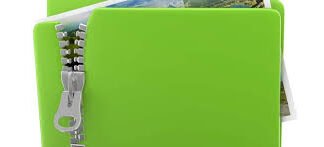Description
1. (25 points.) Consider the image walk.png. Load this into Matlab and convert it to a double.
(a) (5 points.) Use filter2 to apply the Sobel operator
−1 0 1
−2 0 2
−1 0 1
to the image. First, visualize
the result using imshow(result,[]) and interpret what you see. Remember, the strongest positive
responses will be mapped to white, the strongest negative responses will be mapped to black, and
responses close to zero will be mapped to neutral gray.
(b) (10 points.) Now, create a binary image containing only those pixels whose response is greater than
200 in absolute value. Which pixels are highlighted? Turn in a plot with your homework. There are
some vertical edges that aren’t picked up at this threshold, like the nearly white-on-white edge of the
front woman’s coat. How low do you have to make the threshold in order to get a visible response in
this area? What happens to the rest of the image when you do so?
(c) (10 points.) Repeat the experiment for the second Sobel operator
−1 −2 −1
0 0 0
1 2 1
. Again, interpret
what you see in various regions of the image and describe what pixels are highlighted if you threshold
the pixels greater than 200 in absolute value.
2. (20 points.) Consider the image fuzzycat.png. First, view it normally with imshow(…,[]). Note that
the image is slightly blurry.
(a) (5 points.) First, filter the image using ones(5)/25. How does the image compare with the original?
What details are different?
(b) (15 points.) Using integer values of k ranging from 1 to 5, implement equations (3-64) and (3-65) in
the book to apply unsharp masking (k = 1) and highboost filtering (k > 1) to the image. Explain what
you see as k increases. How does the filtered image improve? Note that you should clip the results
to [0, 255] before display. Include the k = 1 and k = 5 pictures in your homework. Discuss specific
regions in the image for full credit.
3. (20 points.) Consider the image boat.png. This image has grainy noise added to it.
(a) (8 points.) First, filter the image using the low-pass filter ones(5)/25. How does the image compare
with the original? How and where is the noise visibly reduced?
(b) (12 points.) Next, filter the image using a 5×5 median filter. How does the image compare with the
original? How does it compare with the image in part (a)? Which image seems perceptually better?
Pay particular attention to high-contrast edges, flat areas, and areas of fine detail. A good way to
compare and contrast the two images is with a flicker animation using commands like while 1,
figure(1), pause(.5), figure(2), pause(.5), end.
4. (10 points.) Suppose we filter an image twice: we first apply the box filter ones(3)/9, and then filter the
resulting image with the 3×3 Laplacian filter (the one with -4 in the middle element).
(a) (5 points.) Determine (manually) a single 2D filter that will result in the same output using a single
pass. Show your work.
(b) (5 points.) Would your result in (a) be different if we applied the filters in the reverse order? You
should be able to answer this without explicitly computing the result; what is the signal processing
basis for your answer?
5. (25 points.) Consider the image board.png.
(a) (5 points.) First, filter the image with a 19×19 Gaussian filter with standard deviation 3 (which you
can create using fspecial). Describe what you see.
(b) (5 points.) Now create your own function called gaussv that returns a 1-D Gaussian low-pass filter
as a column vector. The inputs to your function should be N, the length of the filter, and sigma, the
standard deviation of the Gaussian. The filter should be scaled so its elements sum to 1.
(c) (5 points.) Use your gaussv function with arguments N = 19 and σ = 3 and apply it to the input
image. Describe what you see compared to part (a) and explain why the filter has this effect.
(d) (5 points.) Use your gaussv function with arguments N = 31 and σ = 5 and apply it to the input
image. Describe what you see compared to part (c) and explain why the filter has this effect.
(e) (5 points.) Use your gaussv function with arguments N = 75 and σ = 5 and apply it to the input
image. This should look almost exactly the same as part (d); explain why.


